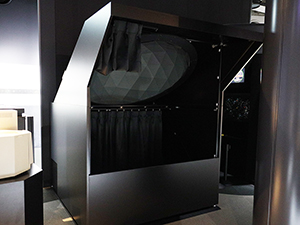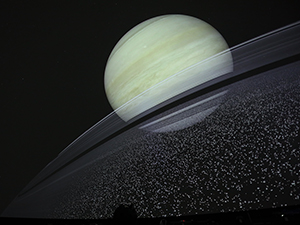Nagoya City Science Museum
TOP > Exhibition Guide > Keyword Search > Starting with "D" > digital > How Digital Planetariums work
How Digital Planetariums work



Purpose of Exhibition
Imagine a computer that holds a miniature model of the entire Universe inside it. This is the fundamental concept of a Digital Planetarium. It's like a treasure chest, filled with all sorts of cosmic data, collected from ground-based telescopes, space telescopes, and even planetary probes. This includes details such as the brightness, position, and proper motion of stars, as well as data on the orbits and sizes of planets, satellites, asteroids, comets, and other solar system objects. It also houses 3D models of spacecraft and their orbital data. This system allows us to generate stunning visuals of the Universe. You can see what it's like to leave Earth and traverse through space towards distant celestial bodies, get up-close views of astronomical phenomena, watch as planetary probes investigate solar system objects and gaze upon starry skies from the distant past or future. When these visuals are projected onto the entire dome with projectors, you can have an immersive experience, as if you’re really there in space.
This exhibit features a digital planetarium, which projects explanatory videos onto a dome-shaped screen with a diameter of 1.5 meters. With just a press of a button, you can experience the wonders of the Universe.
Additional Knowledge
The Digital Planetarium is composed of a master PC that oversees the entire system and image generator PCs that produce visuals. It is equipped with a specialized software called Space Engine, designed just for planetariums.
There are several ways to project visuals onto the dome. One way is to use a fisheye lens with a single projector to cover the entire sky, which is the method used in this exhibit. Another is to use multiple projectors, each one responsible for a different part of the dome. It uses technology to synchronize image generator PCs, to play each visual at exactly the same time, and to make the boundaries between the projections unnoticeable, creating a seamless image as a whole. The third trick is to cover the entire inner surface of a dome with self-luminous LED elements. This allows the dome itself to display bright and colorful visuals, eliminating the need for a projector.
Article by Astronomy Section
